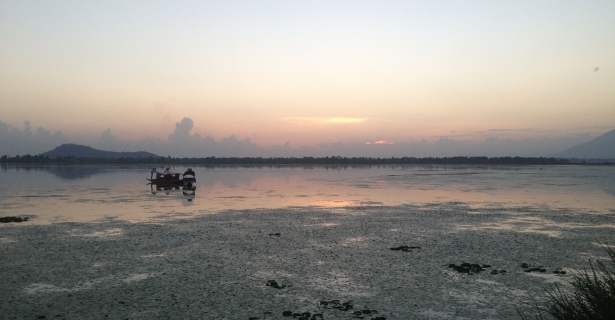Allison Jeffery is a rising senior majoring in International Relations with a concentration in Security, and Spanish. This summer, she has been working with INSPIRE Fellow Justine Hardy at Kashmir Lifeline and Health Centre in Srinagar, Indian-controlled Kashmir, conducting research for her senior thesis on the effect on conflict violence on women’s health.
The conflict in Kashmir has undoubtable repercussions on the lives of all Kashmiris, but especially for women. When examining a conflict that largely does not include female combatants — save a few exceptions such as the all-female separatist group Dukhtaran-e-Millat (Daughters of the Faith) — it would be easy to assume women are less affected by the conflict than those fighting in the streets.
But just because women are rarely "disappeared" or shot in the streets, does not mean they have suffered less.
The women and girls of Kashmir have been forced to hold families together throughout the conflict, taking over the roles of their “disappeared” or slain husbands, brothers, and fathers. In a society that teaches strict gender roles, the ability for a woman to perform traditionally male tasks is both an internal struggle and the object of social stigma. Many of the professors I interviewed in Kashmir referenced this struggle between two roles as a source of stress for women, particularly rural, uneducated women who have few employable skills that would serve them in taking over the role of primary breadwinner.
Another source of stress for women is the daily uncertainty caused by the conflict, which forces them to wonder if their husbands and children will ever return home, unharmed and alive. This debilitating stress causes high levels of anxiety and other mental illnesses for the women of the Valley.
Mental health is further deteriorated by another effect of the conflict - the destruction of women’s civil society groups. Before the conflict, neighborhood women would meet to discuss their lives in the late afternoons, after their families returned from work and school and the daily housework was finished. But with the conflict came doors firmly locked before sundown, with women isolated in their homes, their support systems largely collapsed. Attempts to rebuild such groups, with the conflict ongoing, have been met with a myriad of difficulties and have largely failed to reestablish social support for women.
The women of Kashmir have faced alarming rates of conflict-related sexual violence. One of the most infamous instances of sexual violence in Kashmir is the 1991 mass-rape in the village of Kunan Poshpora during a crackdown, where anywhere from fifty-three to one hundred women were raped by members of the Indian military. For as much media attention this incident has received, there are countless others that have been ignored. Due to political pressures as well as social- and self-stigma, survivors of sexual violence in Kashmir rarely, if ever, receive justice. More than twenty years later, the Kunan Poshpora case has still not been officially decided.
In researching the psychosocial ramifications of the conflict on Kashmiri women, it would be easy to define them solely as victims. And they have been victimized in some of the most horrible ways, by the conflict and its effects. But they are also survivors of the violence perpetrated against their minds, bodies, and families, and in surviving, have preserved for society at least some sense of normalcy in the chaos. That is something to be respected, not pitied.
It was an honor to meet, work with, and learn from so many of strong, intelligent women during my time in Kashmir. Thank you so much for sharing your insight and stories with me.


Add new comment